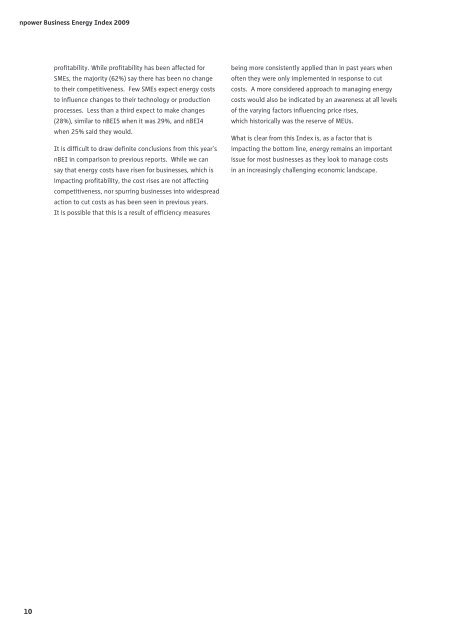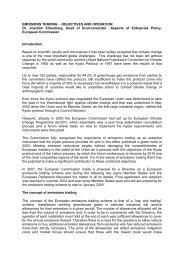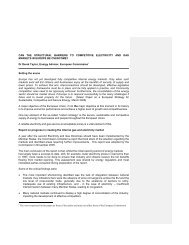Business Energy Users Survey - Winter 2008/09 - Moffatt Associates
Business Energy Users Survey - Winter 2008/09 - Moffatt Associates
Business Energy Users Survey - Winter 2008/09 - Moffatt Associates
You also want an ePaper? Increase the reach of your titles
YUMPU automatically turns print PDFs into web optimized ePapers that Google loves.
npower <strong>Business</strong> <strong>Energy</strong> Index 20<strong>09</strong>npower <strong>Business</strong> <strong>Energy</strong> Index 20<strong>09</strong>profitability. While profitability has been affected forSMEs, the majority (62%) say there has been no changeto their competitiveness. Few SMEs expect energy coststo influence changes to their technology or productionprocesses. Less than a third expect to make changes(28%), similar to nBEI5 when it was 29%, and nBEI4when 25% said they would.It is difficult to draw definite conclusions from this year’snBEI in comparison to previous reports. While we cansay that energy costs have risen for businesses, which isimpacting profitability, the cost rises are not affectingcompetitiveness, nor spurring businesses into widespreadaction to cut costs as has been seen in previous years.It is possible that this is a result of efficiency measuresbeing more consistently applied than in past years whenoften they were only implemented in response to cutcosts. A more considered approach to managing energycosts would also be indicated by an awareness at all levelsof the varying factors influencing price rises,which historically was the reserve of MEUs.What is clear from this Index is, as a factor that isimpacting the bottom line, energy remains an importantissue for most businesses as they look to manage costsin an increasingly challenging economic landscape.Section 1: <strong>Energy</strong> CostsIn this sixth npower <strong>Business</strong> <strong>Energy</strong> Index, respondents were asked a range ofquestions relating to energy costs and, where possible, these have been benchmarkedagainst results from previous surveys.KeySMEsMEUsSmall- to medium-sized enterprisesMajor energy users(1) = nBEI Summer 2005(2) = nBEI <strong>Winter</strong> 2005(3) = nBEI Summer 2006(4) = nBEI <strong>Winter</strong> 2006(5) = nBEI <strong>Winter</strong> 2007-<strong>2008</strong>(6) = nBEI 20<strong>09</strong>1.1 <strong>Energy</strong> costs as a proportion of total operating costs:Response SMEs (4) SMEs (5) SMEs (6) MEUs (4) MEUs (5) MEUs (6) All (4) All (5) All (6)Less than 5% 43% 53% 49% 30% 61% 34% 37% 57% 44%Less than 10% 25% 24% 24% 12% 18% 29% 19% 21% 26%Less than 20% 13% 6% 15% 15% 7% 17% 14% 7% 16%Less than 50% 10% 5% 4% 19% 11% 12% 15% 8% 7%50% or above 6% 0% 0% 24% 3% 1% 15% 2% 0%Don’t know 3% 12% 8% 0% 0% 7% 2% 6% 8%•••In the last 12 months there has been a significantrise in business energy costs as a percentage of totaloperating costs.For SMEs the percentage reporting energy costsbetween 10-20% of total operating cost is up from6% to 15%.The corresponding figure for MEUs is up from 7%to 17%. For 12% of MEUs energy costs representbetween 20% and 50% of total operating costs.••For SMEs there is a strong positive correlationbetween the significance of energy costs and thenumber of employees. 13% of SMEs with between10-24 employees have energy cost ratios between10-20% compared to 21% of SMEs with employeesbetween 50-100 with the same ratio.For MEUs, 44% of manufacturers have energy costratios between 10-50%, whereas 58% of MEUs in thepublic and service sectors have an energy cost ratioof less than 5%.1011




